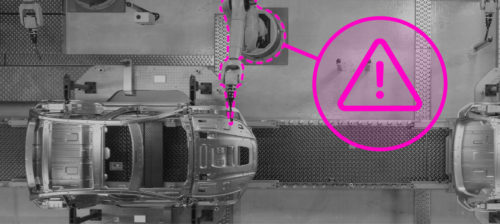Now there are two
For much of my career, I didn't put much stock in awards — especially not journalistic awards. Most awards programs, I argued, were more about impressing a small group of judges than about doing your job, day in and day out, in an exemplary manner. For example, I've seen journalists win awards for articles that were of little or no interest to their readers.
For much of my career, I didn’t put much stock in awards — especially not journalistic awards. Most awards programs, I argued, were more about impressing a small group of judges than about doing your job, day in and day out, in an exemplary manner. For example, I’ve seen journalists win awards for articles that were of little or no interest to their readers. At the same time, I’ve seen many excellent, important articles go unrecognized, because the judges didn’t understand the information they were judging. As a result, I was negative on even entering most awards programs.
Then, in 1989, A.T. Kearney management consultants approached us about building an awards program that would encourage excellence in industrial maintenance. The partnership of Kearney and PLANT ENGINEERING, with the help of some really knowledgeable maintenance professionals, resulted in the North American Maintenance Excellence Awards — the NAME Awards, as they are better known. A few years ago, Kearney dropped its support, and the program directors formed the independent Foundation for Industrial Maintenance Excellence to administer the awards.
My experience with the NAME Awards taught me that good awards programs are not really about winning plaques or trophies, although those are fine. Good programs are about honoring and encouraging those who travel the path to excellence.
I’ve changed my mind about entering awards programs for two reasons. First, the mere act of entering provides a strong boost to your employees by telling them that you think their work is important and worthy. When you say, “We won’t enter, because we probably won’t win,” you’re sending a negative message about how you evaluate their work.
Second, striving for an award can be an important educational and motivational tool — especially if the award program provides feedback on the strengths or weaknesses of your entry. Unfortunately, few programs do. Even so, by using an award as a carrot, many workers will be motivated to offer just a little more effort than they might otherwise. In the striving, they learn.
With those benefits in mind, PLANT ENGINEERING magazine has developed the PLANT ENGINEERING Top Plants recognition program. In building this program, we have borrowed from the NAME Awards, the Shingo Prize, the Baldrige Awards, and other programs to recognize the plant engineering function and the contribution it makes to excellence in industrial operations. Each year, we will not only honor plants that have achieved an exemplary level of performance, but we will also provide all entrants with feedback they can use in their efforts to improve. In that respect, every entrant is a winner.
So now there are two programs to help you on the path to excellence. For more on the Top Plants program, see the information on p 37 in this issue. Then visit plantengineering.com to find details and entry forms for both the NAME Awards and the PLANT ENGINEERING Top Plants recognition.
Do you have experience and expertise with the topics mentioned in this content? You should consider contributing to our CFE Media editorial team and getting the recognition you and your company deserve. Click here to start this process.





